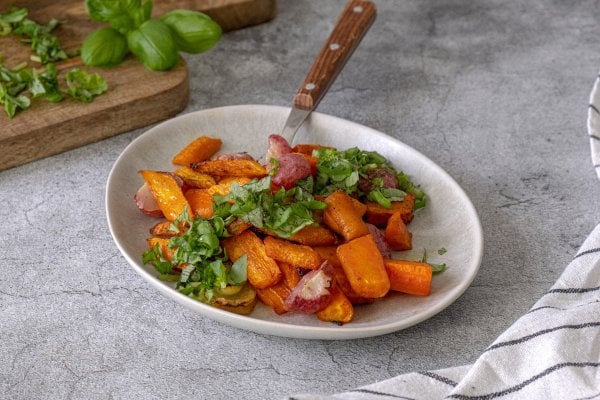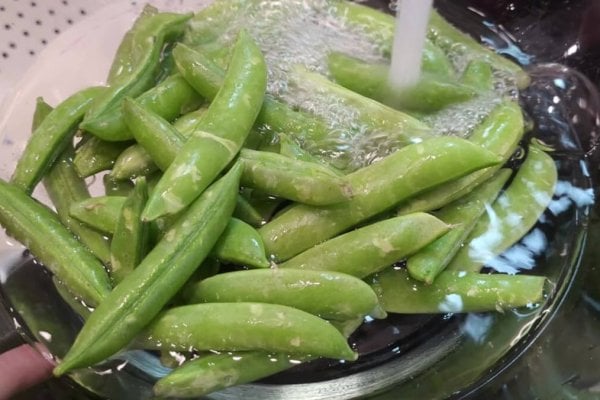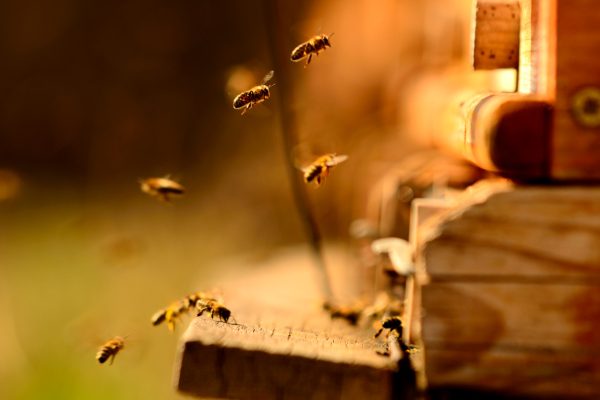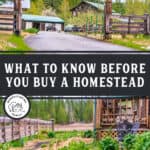
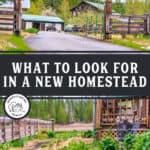
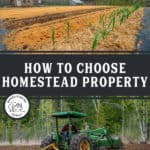
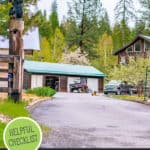
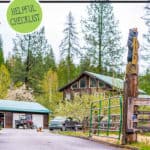
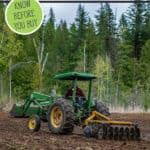
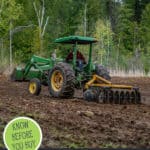
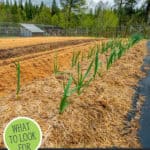
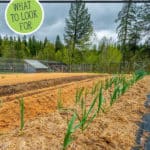
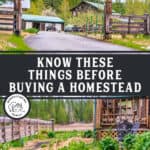
So you want to know how to buy a homestead. There are many factors that must be considered before buying any property, whether developed or not. Here are our best tips for knowing what to look for when looking for homesteading property.
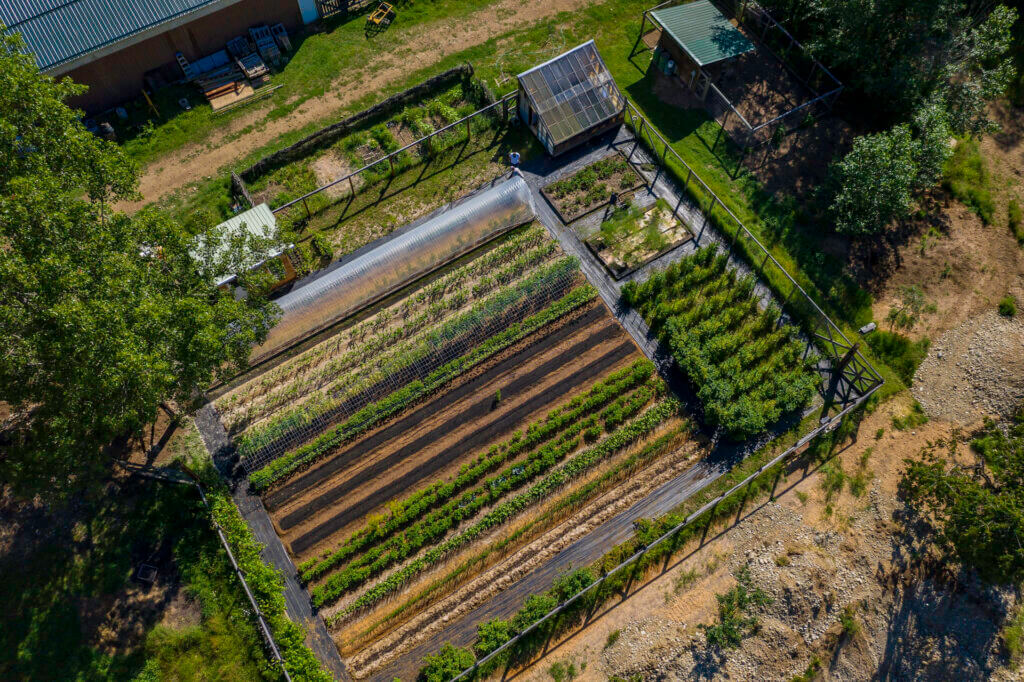
It’s common for people to watch homesteaders on a TV show or a YouTube channel and dream of owning a homesteading property of their own. After all, if you’re reading this, chances are this is a dream of yours, too!
Homesteading is much more than knowing how to raise meat chickens, grow enough food for your family for a year or raise enough livestock for a year’s worth of meat. It goes beyond knowing the top gardening mistakes to avoid or whether the no-till gardening method is right for your situation. It’s even more than knowing basic emergency preparedness skills or how to build up a well-stocked pantry.
These are all great skills to have, and we think they’re essential in running a successful and productive homestead. But the tips we’re sharing below are essential pieces of knowledge to have about your homestead property before you sign the dotted line to buy.
This post was originally published with our Pantry Chat on How to Choose a Homestead Property and has since been updated with Josh’s podcast interview with Annette Sievert, a homesteading real estate agent who wrote the book How to Buy a Homestead Property: A Handbook for Your Homesteading Journey.
Together, these two podcasts and this blog post will help you save money on your piece of land, maybe even help lower the purchase of the land.
It’s easy to sink a lot of money into a homestead dream. But you must be aware of the natural resources, the dirt roads, the septic systems or wells, the solar panels, and any other financial obligation that comes with that piece of property when the day is done.
12 Things to Consider When Choosing a Homestead Property
- Have an anchor
- Who are the neighbors
- Is there access
- What is the water source
- Is there power
- Where is the house site
- Build or buy established
- How much land do you need
- What is the climate
- What is the landscape like
- Orientation of the home
- What is the soil composition
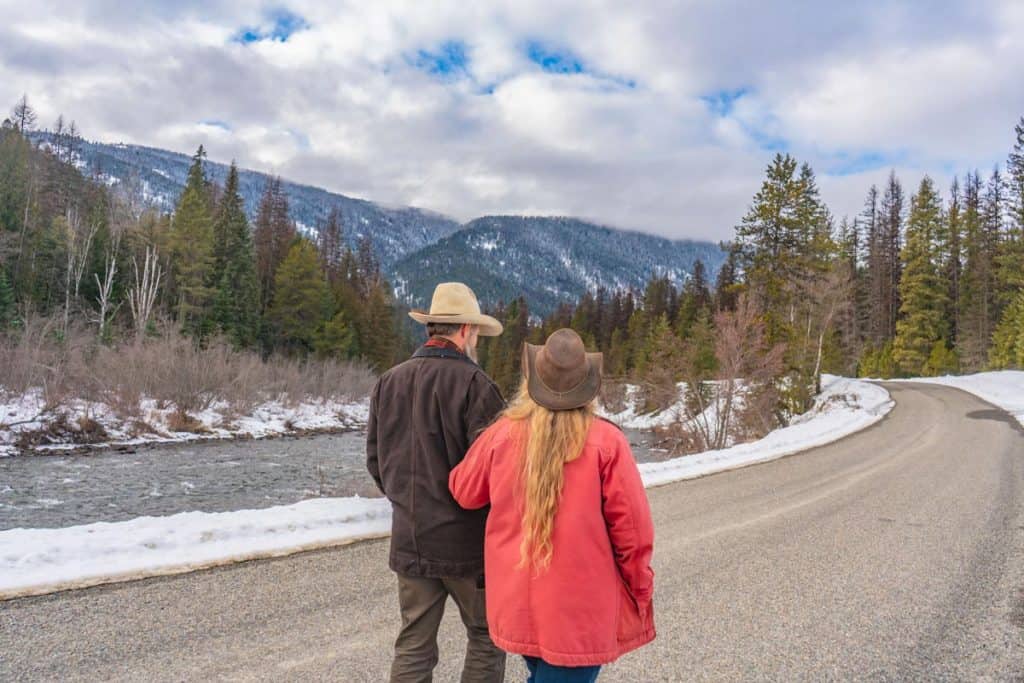
Have an Anchor
One of the most important things to have when moving to a new area, whether you’re buying homesteading property or not, is an anchor.
An anchor could be friends, family members, or a church family that you already know and have a relationship with. It’s these people who will be there for support, friendship, and advice when needed.
Moving to a new place is hard enough, but completely starting over with building relationships, finding a church home, and maybe even a new job can sink your new adventure in a heartbeat.
Know The Neighbors
Get to know your potential neighbors. You’re going to live next to them so they’re pretty important!
This is especially important if you have an easement or you need to pass through their property to get to your own.
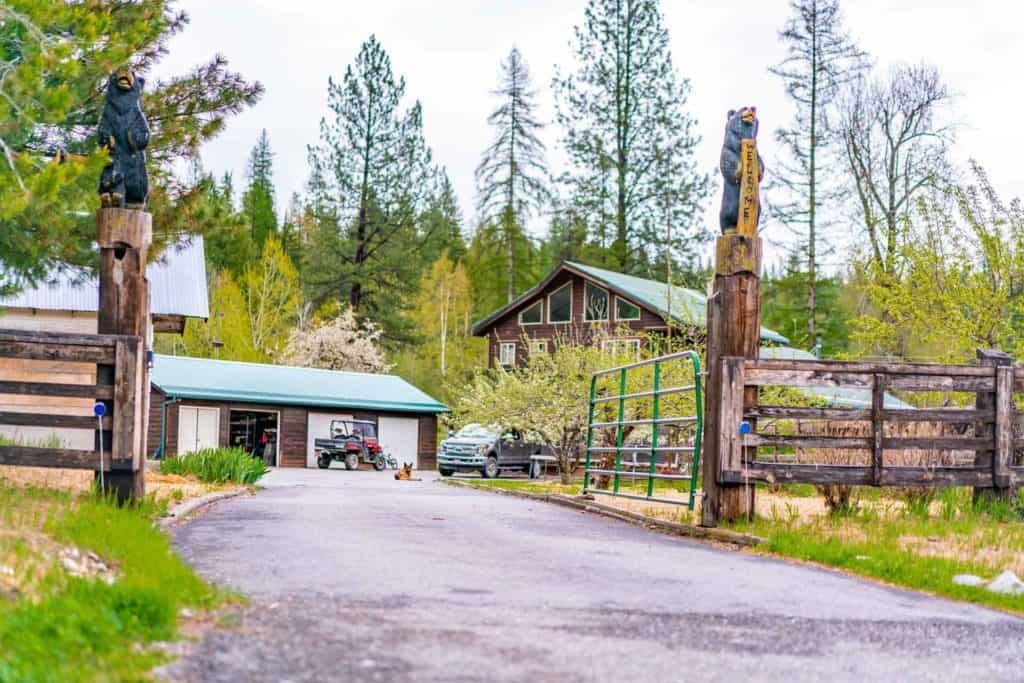
What is the Access Like
Having easy access to your property is great, but it’s not a deal breaker if you need to obtain access. There are some things to consider before buying a property that “just needs a road put in”.
First, you have to know and understand legal access, and or do you need to get an easement from the neighbors.
If you’re sharing access, who will be maintaining and taking care of the access (both for repairs, and if there is snow in the winter).
What does the access go through?
- Does it go over a creek?
- Is it prone to flooding?
- Is it shady and will it get icy in the winter?
- Is it steep and a danger to drive in snow or icy conditions?
- Is it gravel or paved?
- How long is the access road?
Knowing all these things should help you figure out the financial costs of maintaining the access road. But do know the exact dollar amount BEFORE buying the property. Especially, as Annette pointed out, if you’re building a home and need to build a bridge, that bridge may need to be engineered to carry large machinery and heavy loads, all of which come with a price tag.
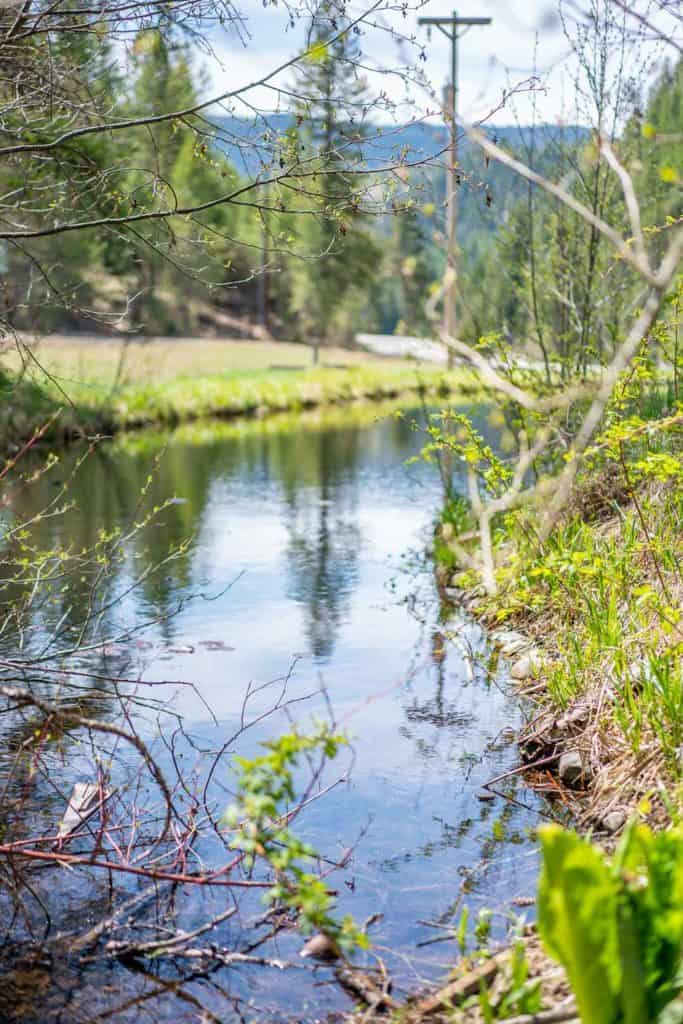
What is the Water Source
Know how you will source your water before you buy. Do you need to drill a well? Is there a natural spring? Do you have rights to the spring? Will you be on municipal water? Is the water line right up to your property or a half mile down the road?
All these things need to be answered before buying property.
Something else that’s important to know when drilling a well is the depth of the water BEFORE buying land. Now it’s impossible to know the depth unless you actually drill.
But one thing we’ve seen time and time again is people relying on the depth of the neighboring properties to determine a budget for their well. Sometimes you’ll need to dig over 500-800 feet before hitting the water and a setback like this can quickly sink your budget.
Even if you can dig a well, you need to know the mineral content and know whether you’re going to need to put in a whole house water conditioner (another large cost).
If you can work getting a well dug BEFORE you move in, maybe bargain that into the escrow, or make the sale of the property contingent on getting the well dug, that would be a smart route to take.

Is There Power
Just like with water, you need to know how you’ll get power run to your property. Will you be on municipal power? Is there already power run up to the property line or is it half a mile down the road? How far back will your house sit?
Know the cost of all these things AHEAD of time so you’re not caught off guard when the large price tag comes your way.
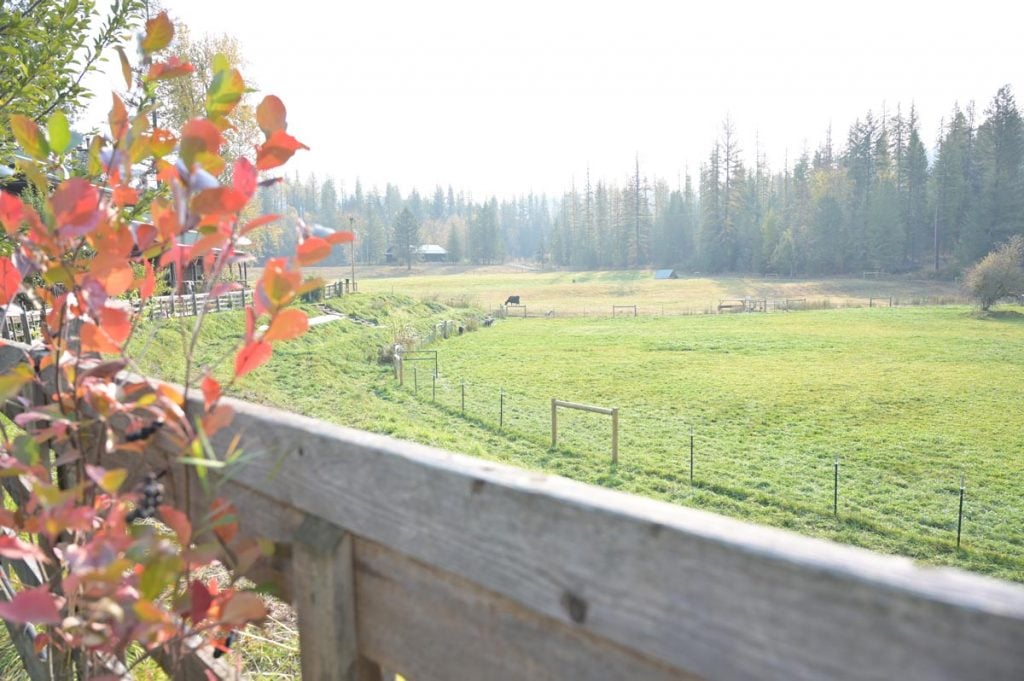
Know Your House Site
This tip is for those building a house on the homestead property. Know where your house will be before buying.
Most of us want to take advantage of the best view on the property, but this usually means your house will be exposed, usually up higher on the property which means it’s also harder to run water and power to the site.
It’s not a deal breaker, but just one more thing to consider beforehand.
Other times, people will want to build down low, especially if there’s a pond or a river. But this can also tend to be the colder, wetter areas of properties, too.
It doesn’t always seem ideal, but it may actually be better to build mid-slope somewhere.

Are You Building a Home or Buying a House
There are advantages and disadvantages to building a home or buying a homestead with an existing home.
Building means you get to start from scratch and do it exactly how you want. But this comes at a cost, and you only have so much money to invest in each project at a time.
Buying an existing home means you might be coming into existing problems that need tending to. It also might not be ideal for your situation. As we say so often with our advice on which option is best… “it depends.”

How Much Land Should You Buy?
Bigger isn’t always better. If you can buy ahead of time and develop it slowly while you live elsewhere, that’s great.
Ultimately, you can build a home and develop quite a lot (and be self-sustainable) on a fairly small lot. Annette shared that the majority of the people she works with want about ten acres (though there are some who want nothing less than 100 acres).
It’s probably eye-opening to learn that we grow most of our food on less than an acre. If you include our infrastructure, we’re under two acres. Then, if you move out and include the pastures, we’re at about five acres.
For us, owning 40 acres is important because we hope to slowly develop the land and have multiple generations living here. However, this isn’t necessarily everyone’s dream or end goal. You really can do a lot with just five acres!
It’s our suggestion to grow slowly. It’s our opinion that it’s better to have a small property that’s manageable and producing a lot of food, than a large property that’s draining your resources and too much to maintain and keep up with.
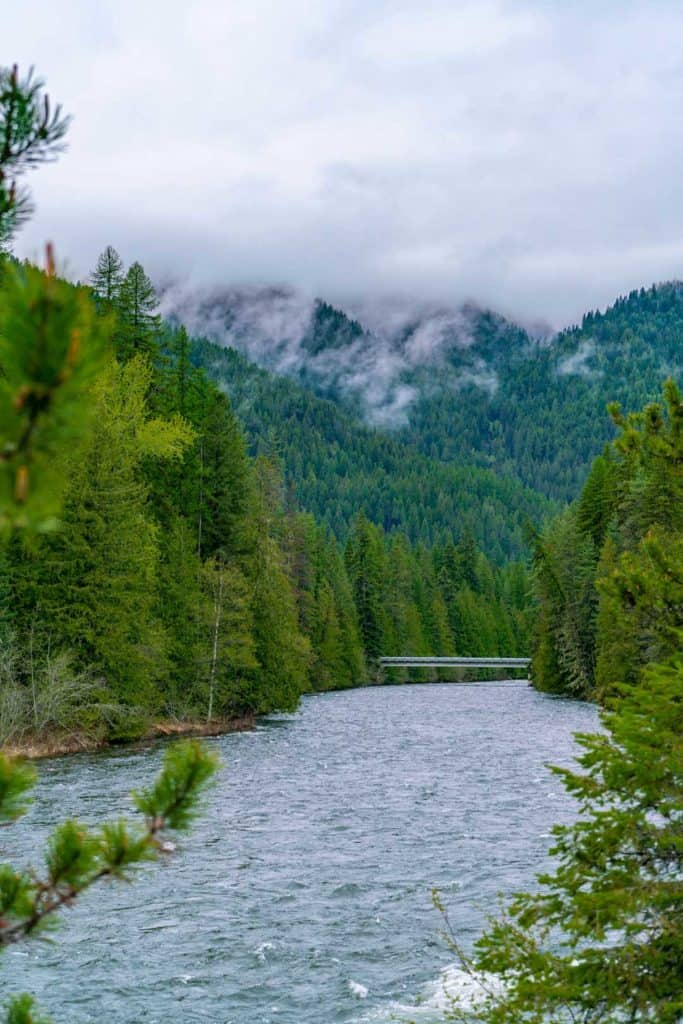
Know the Climate
We get asked a lot about climates and where the best climate is to homestead. But you know the saying “the grass is always greener”. We’ve lived in nearly every climate in the continental United States and there are definitely hardships and benefits that come with every climate.
If you’re looking to move to an area where the climate will be different than you’re used to, it’s important to know ahead of time what that climate will look like and how it will affect your property YEAR ROUND.
Moving from a warm southern, mostly sunny climate, to a cool northern cloudier climate can really affect more than just your growing season. We’ve seen that happen where we live and many people end up having real trouble adjusting.
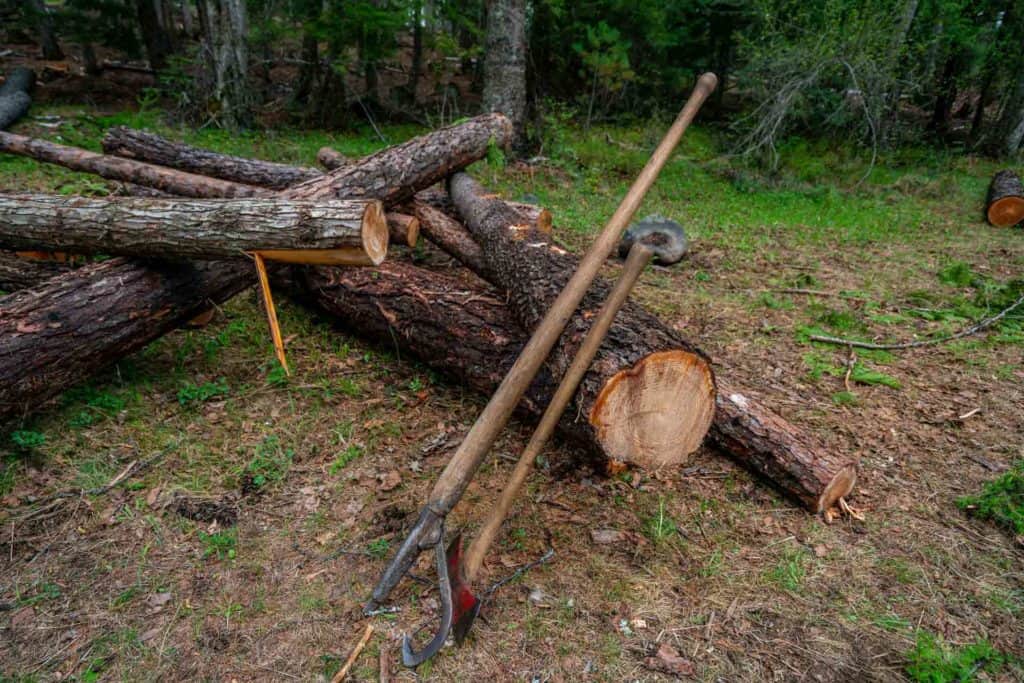
What Kind of Landscape is Best
Another common question is what kind of land is best to buy? Should you buy timber land, flat land, etc.?
Ultimately, the answer is IT DEPENDS! It depends on what your goals are. Know what your goal is before you buy. Are you wanting to raise animals, garden or timber? That will determine your landscape.
To us, an ideal landscape mix includes a little woodland, some pasture, natural water, and a pond/water storage.
If you’re working with raw land, don’t expect that you’ll go in and change the land around really quickly. Be realistic that changing the land takes time and resources and be sure to plan for it.
Whatever the landscape, we do caution against rocky soil. Clay definitely has its challenges, as does sandy soil, but there is a lot you can do to amend a “not so perfect” soil. It may be many years until you can successfully grow a garden or produce much, but you will get there. On the other hand, if you have giant boulders in the ground or really rocky soil, it will always be difficult.
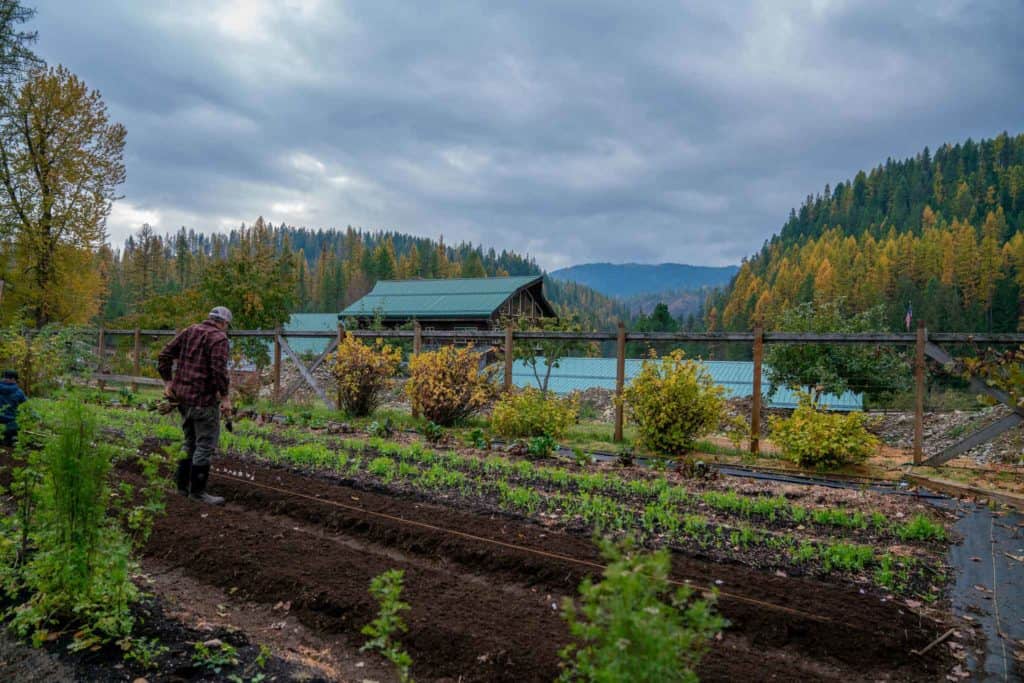
Orientation of the Home
The orientation of your land can play a huge factor in how well your property will be set up for your needs.
In northern climates (northern US or cooler climates), you will generally want southern exposure. If you’re in a desert climate, you may want northern exposure and some trees to shade you from the hot midday sun.
Most areas in the US get cold at night and having some southern exposure is best. You can then grow trees and do other things to help protect from the summer sun.
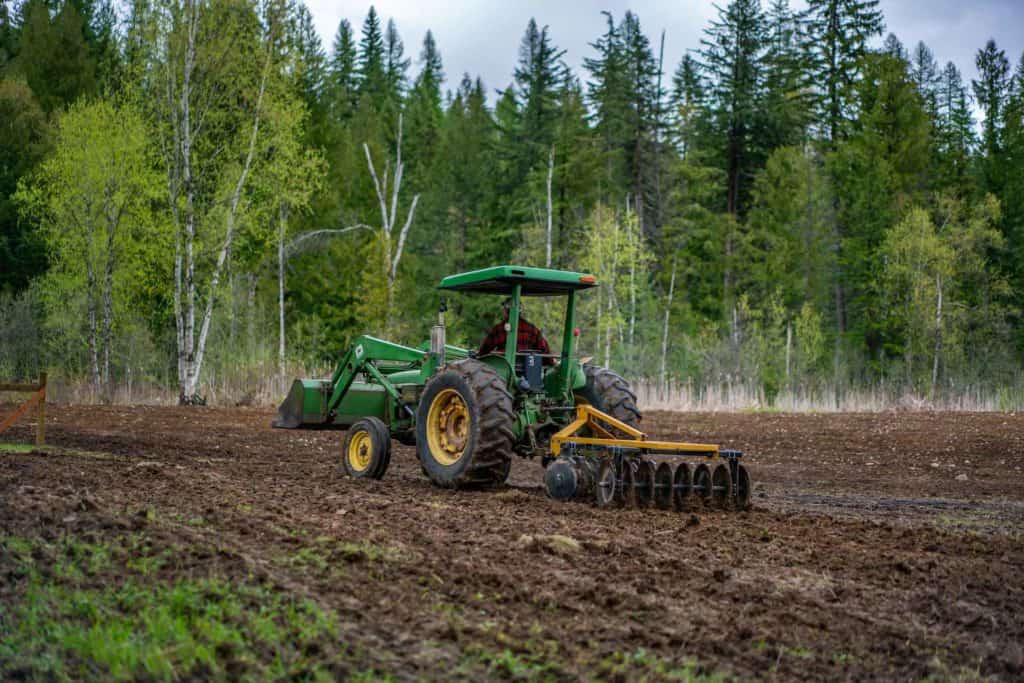
What is the Soil Composition
We touched on it a bit above, but you don’t need to consider the quality of the soil too much when buying land. It does matter just a bit, which is why it’s on the list, but if you want to grow a quality garden, you can amend the soil.
However, if you’re building a business off the land, pasturing, or developing a farm, you’ll want to consider the soil on that large scale.
Hopefully, you find these tips helpful when looking for your homestead property.
There are many things I wished I had known before we started homesteading. Remember to take your time, don’t get emotional, and be wise when taking this big step.
Working With an Agent
Annette always recommends working with an agent when buying a homestead property. Because there are so many nuances to consider, it’s very important to work with someone who is familiar with how to buy a homestead and the processes that go with that. You also want to find an agent who has been in the business long enough to have gone through at least one housing cycle.
Furthermore, never buy a property sight unseen. There’s no such thing as a great deal. If the property is priced extremely low, there’s probably a reason. You must have boots on the ground to walk the property, meet the neighbors and ask about the neighborhood. It’s even better to visit multiple days of the week to ensure the traffic isn’t extremely high on certain days of the week.

More Posts You May Enjoy
- How to Get Started Homesteading
- Apartment to 40 Acres – Our Homesteading Journey
- 8 Things You Need to Know When Buying Homestead Property
- Our Must-Have Homestead Essentials
- 7 Things You Must Do On Your New Homestead
- How to Pivot When Things Go Wrong on the Homestead
- Building Resilience with Justin Rhodes
- Best Homesteading Books for the Novice or the Pro
- Organizing Your Property’s Permaculture Zones
- When Homesteading Feels Urgent
- Things to Consider BEFORE Going Off-Grid
- Direct Primary Care – Going “Off-Grid” With Your Health
- Health Benefits of Going Off-Grid
- Homesteader’s Christmas Gift Guide











